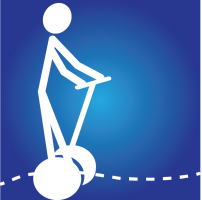The purpose of this study was to determine whether a powered wheelchair user’s ‘goal satisfaction’ improved after five sessions of individualized wheelchair skills training. The researchers also wanted to determine whether or not these changes in satisfaction were maintained 3 months after the training ended. Continue reading
Blog Archives: rehab
Exercise guidelines for individuals with SCI
| 0 commentsThe authors of this study set out to review existing research to create evidence-based exercise guidelines for improving cardiorespiratory health and cardiometabolic health which are specifically designed for those with SCI. Continue reading
New research could lead to changes in SCI recovery guidelines
| 1 commentSpinal cord perfusion pressure is the difference between mean arterial pressure and cerebrospinal fluid pressure. Continue reading
Wheeling strategies in manual wheelchair users and able-bodied individuals
| 0 commentsWhat is biomechanics? Biomechanics is the science of movement of a living body, including how muscles, bones, tendons, and ligaments work together to produce movement. Continue reading

Cardiovascular health during rehabilitation
| 0 commentsCardiovascular disease is more prevalent within the SCI community than in the general population.The reason for this is because of the extensive amount of bed rest following traumatic spinal cord injury, which results in a low level of physical activity and cardiovascular fitness. Continue reading
Finding a biomarker for acute SCI
| 0 commentsWhat is a biomarker? A biomarker is any measurable indicator in the body that represents a certain condition. Having a biomarker is helpful in assessing an illness, and sometimes in selecting the most effective treatment for the illness.
Continue reading
How bowel, bladder, sexual dysfunction can affect health
| 1 commentWhat is bowel, bladder and sexual dysfunction? Persons with a spinal cord injury (SCI) can experience changes to their bladder, bowel, and sexual function secondary to the spinal cord damage. Problems can occur due to a lack of voluntary control over urination and defecation, possibly leading to complications like urinary tract infections. Continue reading
A phone-monitored upper limb home exercise program for post-stroke individuals
| 0 commentsPost stroke recovery– The ideal rehabilitation program: Up to 75% of stroke survivors have upper limb impairments that make everyday tasks like grasping a cup or utensil difficult. Many of these individuals become reluctant to use their affected limb in daily activities (called “learned non-use”). This can be detrimental to their long-term health, since reduced arm use has been associated with consequences such as decreased strength and bone density. Continue reading
Using robot-applied resistance in walking rehabilitation
| 0 commentsAdrian Cheng, Lia Yu, Ana-Maria Oproescu This is a summary of a research study done by Dr. Tania Lam and colleagues at ICORD. Dr. Lam’s research interests are focused on human walking and its relationship with the nervous system. Click Read More…

Investigation on Spasticity and Standing
| 1 commentLynda Bennet Original article: Sadeghi M, McIvor J, Finlayson, H, Sawatzky B. Static standing, dynamic standing and spasticity in individuals with spinal cord. Spinal Cord, 2015, September [ doi: 10.1038/sc.2015.160]. Find the original article here Have a spinal cord injury and experiencing Read More…

